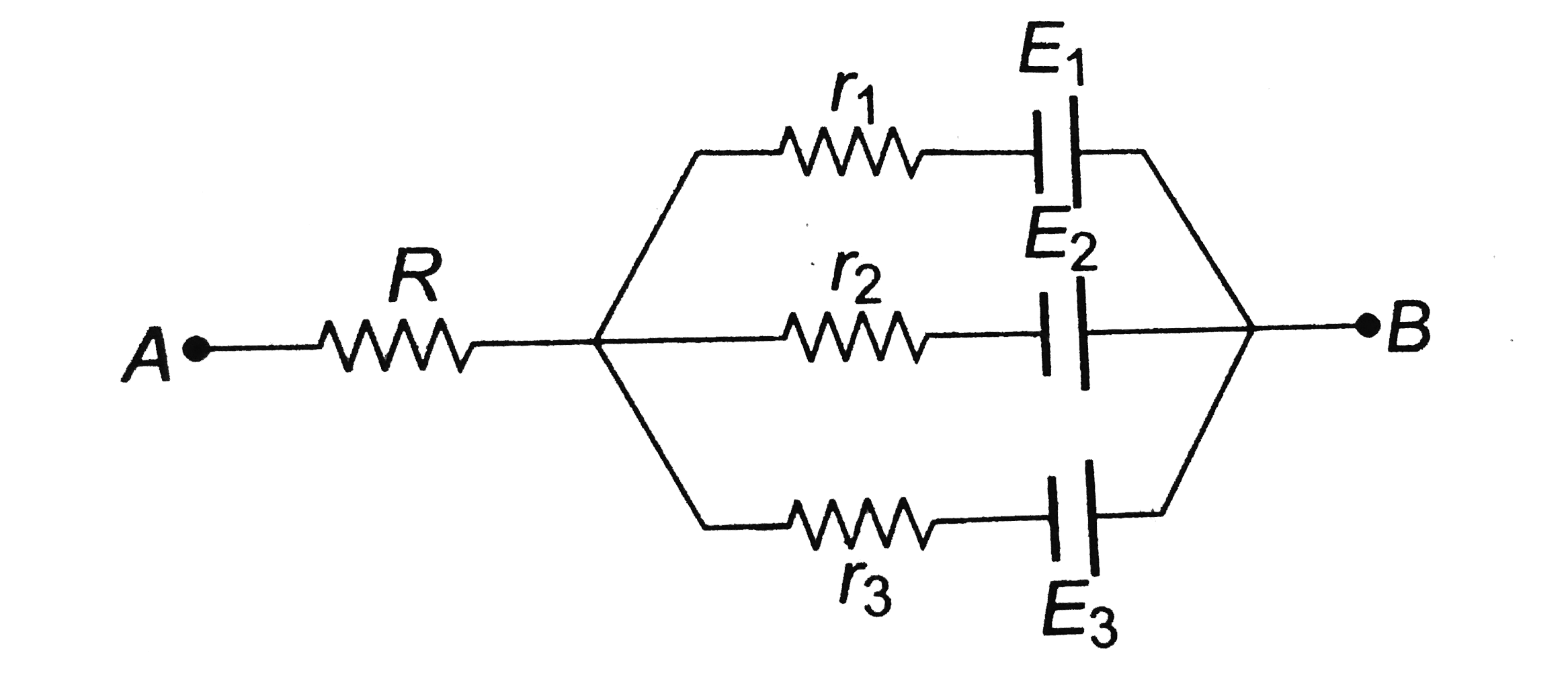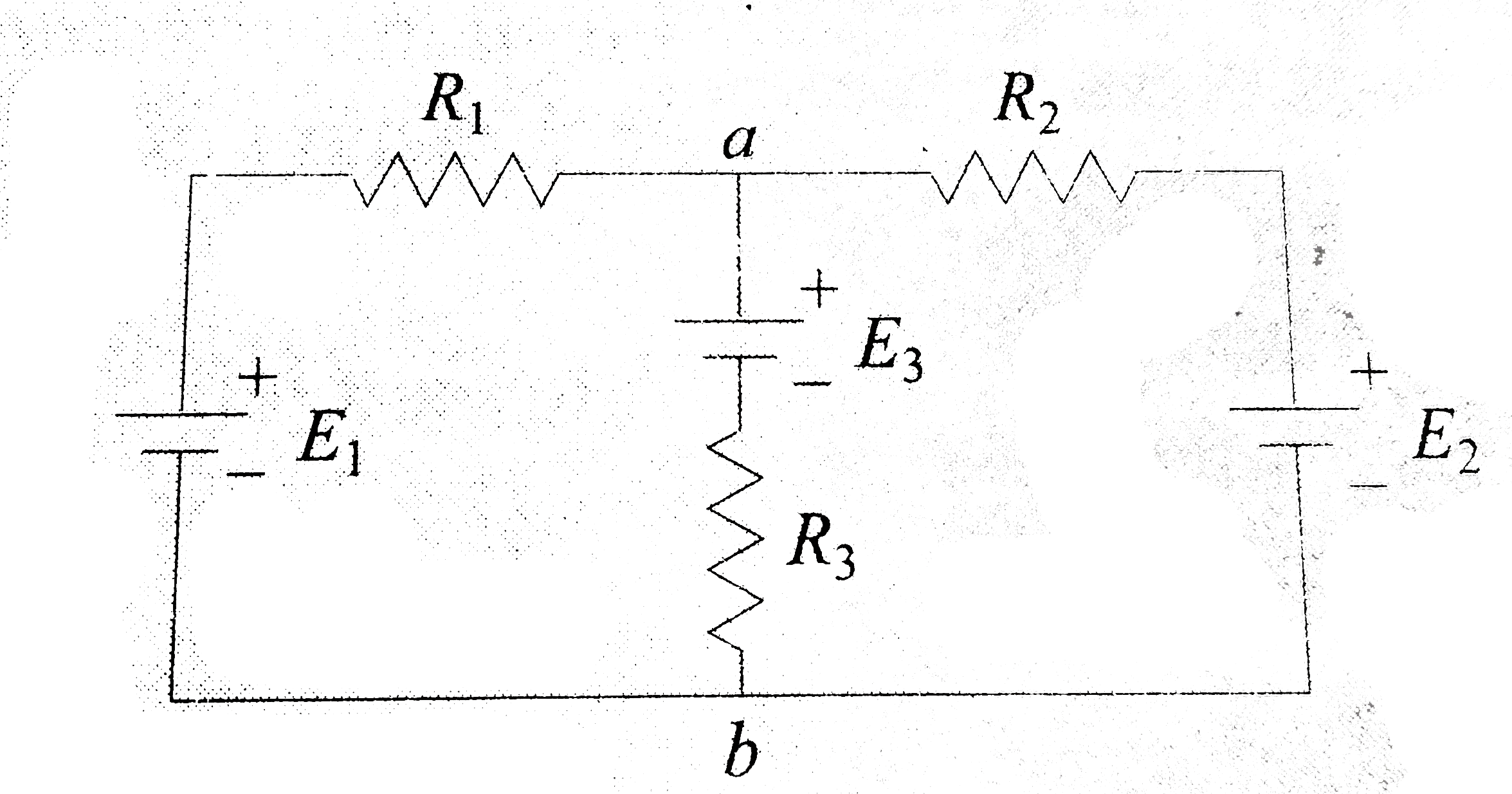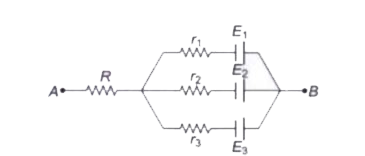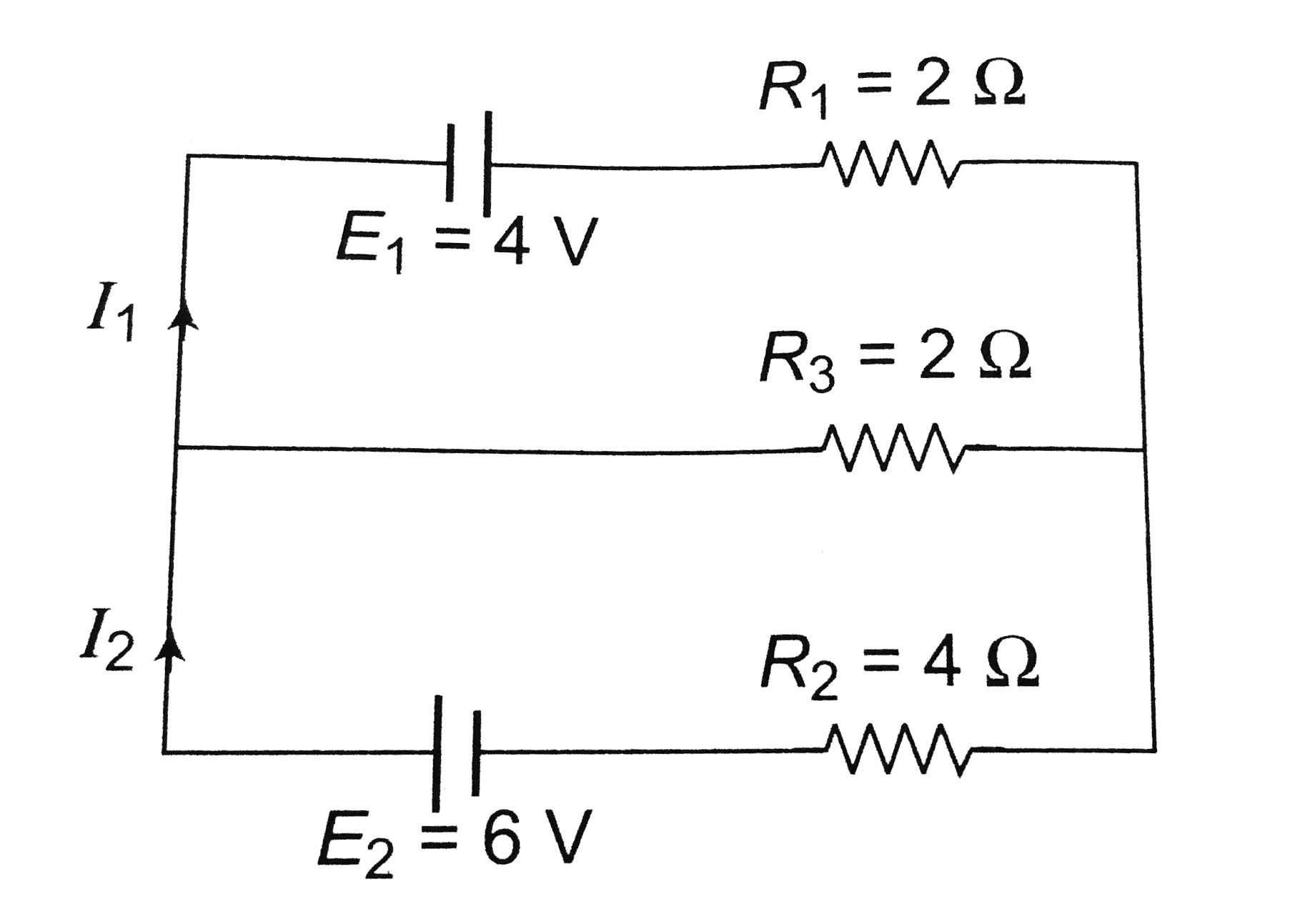In the network shown the potential difference between A and B is (R=r1=r2=r3=1Ω,E1=3V,E2=2V,E3=1V)

1V
2V
3V
4V
The correct Answer is:B
At junction point E we have,
I1+I2+I3=0 ...(i)
Apply KVL for the loop EE1FE we have,
I1−3+2−I2=0
I1−I2=1
∴I2=I1−I ...(ii)
Apply KVL for the loop EE1FE3E we have,
I1−I3=2
∴I3=I1−2 ...(iii)
From equation (i), (ii) and (iii) we have,
I1=1A,I2=0 and I3=−1A
Now, potential difference between point A and B = potential difference between E and F
∴VEF=E2−I2r2=2−0×1=2V
Topper's Solved these Questions
- BOOK - NIKITA PUBLICATIONCHAPTER - CURRENT ELECTRICITYEXERCISE - Multiple Choice Questions314videos
CURRENT ELECTRICITY
- BOOK - NIKITA PUBLICATIONCHAPTER - COMMUNICATION SYSTEMSEXERCISE - Multiple Choice Questions (Examples for Practice)8videos
COMMUNICATION SYSTEMS
- BOOK - NIKITA PUBLICATIONCHAPTER - ELASTICITYEXERCISE - MCQ314videos
ELASTICITY
Similar Questions
In the network shown the potential difference between A and B is R(=r1=r2=r3=1Ω,E1=3V,E2=2V,E3=1V)
 View Solution
View SolutionCalculate the current through each resistance in the given circuit. Also calculate the potential difference between the points a and b.
E1=6V,E2=8V,E3=10V,
R1=5Ω,R2=10Ω,R3=4Ω
Assume that all the cless have no internal resistance.
 View Solution
View Solution
Knowledge Check
- Question 1 - Select One
In the network shown the potential difference between A and B is (R=r1=r2=r3=1Ω,E1=3V,E2=2V,E3=1V)
 A1 VB2 VC3 VD4 V
A1 VB2 VC3 VD4 V - Question 2 - Select One
In Fig. key K is closed at t=0. After a long time, the potential difference between A and B is zero, the value of R will be [r1=r2=1Ω,E1=3V and E2=7V, C=2μF, L=4mH, where r1 and r2 are the internal resistances of cells E1 and E2, respectively].
 A43ΩB49ΩC23ΩD4Ω
A43ΩB49ΩC23ΩD4Ω - Question 3 - Select One
Three voltmeters A, B and C having resistances R, 1.5 R and 3 R respectively are used in a circuit as shown. When a potential difference is applied between X and Y, the readings of the voltmeters are V1,V2andV3respectively. Then :
 AV1=V2=V3BV1<V2=V3CV1>V2>V3DV1>V2=V3
AV1=V2=V3BV1<V2=V3CV1>V2>V3DV1>V2=V3
In Fig. 27-9, what is the potential difference V.d−Vc between points d and c if ε1=4.0V.ε2−1.0V,R1=R2=10Ω,andR3=8.0Ω, and the battery is ideal?
View SolutionFind a potentail difference φ1−φ2 between points 1 and 2 of the circuit shown in Fig if R11=10Ω,R2=20Ω,E1=5.0V, and E2=2.0V. The internal resisances of the current sources are negligible.
 View Solution
View SolutionThe emf of a cell is ε and its internal resistance is r. its termnals are cannected to a resistance R. The potential difference between the terminals is 1.6V for R = 4 Omega, and 1.8 V for R = 9 Omega. Then,
View Solution
Four resistors R1,R2,R3 and R4 are connected between two terminals A and B iin a network as shown in the diagram. A key K can connect the two points (see diagram) C and D. A constant potential difference (VA−VB)=V is maintained between thhe points A and B
Q. If R1=R4=1Ω and R2=R3=2Ω, the effective resistance between the terminals A and B will change, on closing the key K, byView SolutionIn the circuit shown below E1=4.0V,R1=2Ω,E2=6.0V,R2=4Ω and R3=2Ω. The current I1 is
 View Solution
View Solution
